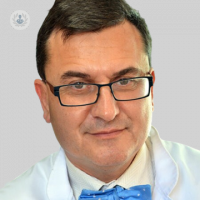A comprehensive guide to PRP therapy: What you need to know
Escrito por:Platelet-Rich Plasma (PRP) therapy has garnered significant attention in recent years as a promising treatment for a variety of medical conditions. Here, we explore what PRP injections entail, their potential benefits, and considerations for those considering this treatment option.

What are PRP injections?
PRP injections involve using a concentrated form of your own blood to promote healing. The process begins with a small sample of blood being drawn from your arm. This blood is then processed to separate the platelets from other blood components. Platelets are small blood cells that play a crucial role in clotting and wound healing. Once concentrated, this platelet-rich plasma is injected into the targeted area requiring treatment.
How do PRP injections work?
Platelets contain growth factors and proteins that assist in the healing and renewal of tissues. By injecting a high concentration of these platelets into an injured area, such as tendons, ligaments, joints, or muscles, PRP therapy aims to stimulate the natural healing process of the body. This can potentially accelerate tissue repair, reduce pain, and improve function. Conditions treated with PRP PRP therapy is commonly used in orthopaedic and sports medicine for conditions such as tendon injuries (e.g., tennis elbow, Achilles tendinopathy), osteoarthritis, and ligament injuries. It is also being explored for aesthetic purposes, such as promoting hair growth.
What to expect during treatment
PRP injections are typically performed as an outpatient procedure and do not require general anaesthesia. The injection site may be numbed with a local anaesthetic to minimise discomfort. After the injection, it is normal to experience some soreness or mild swelling at the site, which usually resolves within a few days.
Benefits and considerations
One of the primary advantages of PRP therapy is its low risk of adverse reactions since the injected substance is derived from the patient's own blood. This reduces the likelihood of allergic reactions or rejection. Furthermore, PRP injections are minimally invasive compared to surgical interventions, offering a potentially quicker recovery time. However, it is essential to note that while PRP therapy shows promise, its effectiveness can vary depending on factors such as the specific condition being treated, the individual's overall health, and the extent of the injury. It may not be suitable for everyone, and outcomes can differ from person to person.
Is PRP right for you?
Before considering PRP therapy, it is crucial to consult with a qualified healthcare provider who can assess your condition and discuss whether this treatment option aligns with your healthcare goals. They can provide personalised advice based on your medical history and the nature of your injury or condition.


